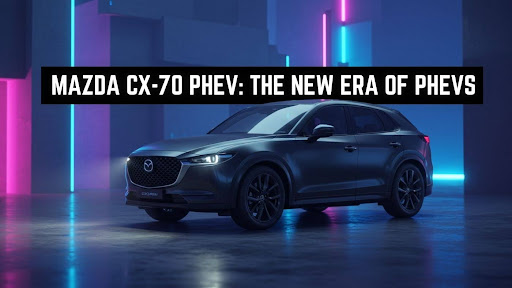From Hardware to Software: The Evolution of Plug-In Hybrids
When plug-in hybrid electric vehicles (PHEVs) first entered the market, they were seen as a practical compromise: a stepping stone between traditional gasoline cars and fully electric vehicles. But today’s PHEVs are something entirely different. They’ve transformed into software-defined mobility platforms, machines that rely as much on code as on mechanical components.
This evolution is changing what it means to drive a hybrid. It’s no longer just about switching between electric and gas power. It’s about cars that think, adapt, and continuously evolve; vehicles that analyze driver habits, communicate with the grid, and update themselves remotely. In essence, PHEVs are becoming as much a part of our digital ecosystem as the devices in our pockets.
According to a McKinsey report on the EV transition, consumers’ perceptions of electric vehicles are changing rapidly as they see improvements in battery technology, range, and charging infrastructure. These advancements are not only making PHEVs more efficient but also accelerating the shift towards electric mobility, as consumers increasingly embrace the digital and sustainable features that define today’s hybrid and electric vehicles.
Table of contents
- From Hardware to Software: The Evolution of Plug-In Hybrids
- The Invisible Intelligence: AI-Driven Energy Management
- Protecting the Heart: Smarter Battery Management
- Cars That Get Better Over Time: The Power of OTA Updates
- Beyond the Drive: PHEVs in the Connected Ecosystem
- Meeting Demand with Smarter Solutions
- The Road Ahead: PHEVs as Living Platforms
- Final Thoughts: A Digital Revolution on Wheels
The Invisible Intelligence: AI-Driven Energy Management
What makes a modern PHEV “smart” isn’t just its dual powertrain: it’s the brain behind it. At the core of these vehicles lies intelligent energy management software, capable of making split-second decisions about when and how to use electric or gas power.
This is where artificial intelligence steps in. Advanced algorithms constantly process a stream of data, such as speed, driving style, terrain, and weather conditions, to determine the most efficient power source at any given moment. Imagine commuting through a congested city where stop-and-go traffic normally drains fuel. A PHEV’s software can prioritize electric driving in these conditions, then automatically switch to gas on the open highway, all without the driver giving it a second thought.
Some manufacturers are pushing this even further with predictive energy management, where the car “learns” from its driver. Over time, it can anticipate your daily routines, like when you’ll hit traffic on your morning commute, and optimize power use accordingly.
Protecting the Heart: Smarter Battery Management
The battery is the lifeblood of any plug-in hybrid, but keeping it healthy requires more than sound engineering; it demands innovative software. Battery management systems (BMS) now do far more than monitor charge levels. They act as guardians, tracking the condition of individual cells, adjusting charging speeds to extend lifespan, and even predicting when maintenance might be needed.
This level of precision ensures that batteries perform at their best for longer, reducing degradation and improving overall reliability. For drivers, that translates into confidence that their car’s energy source is being intelligently cared for, mile after mile.
Cars That Get Better Over Time: The Power of OTA Updates
One of the most exciting advancements in PHEVs is the adoption of over-the-air (OTA) software updates. While traditional vehicles become outdated as they age, software-defined hybrids actually get better over time.
OTA technology enables automakers to update everything from energy-optimization algorithms to infotainment features remotely. Imagine buying a PHEV today and, a year later, receiving a software update that improves your car’s electric range or adds new driver-assistance features all without setting foot in a dealership.
Tesla popularized OTA updates for EVs, but now legacy automakers like Ford, Toyota, and BMW are integrating similar systems for PHEVs. Frost & Sullivan predicts that by 2030, over 90% of new vehicles will rely on OTA updates, fundamentally changing how cars age and adapt.
Beyond the Drive: PHEVs in the Connected Ecosystem
Plug-in hybrids are no longer isolated machines; they are integrated nodes in a connected network. Through smartphone apps, drivers can precondition their car on a cold morning, monitor charging progress from the office, or schedule overnight charging to take advantage of lower electricity rates.
But the potential goes far beyond personal convenience. Automakers are experimenting with vehicle-to-grid (V2G) technology, enabling hybrids to supply energy back to the grid during peak demand. In the future, your PHEV could power your home during an outage or help stabilize local energy networks.
“We’re entering a phase where cars are becoming energy assets,” noted John Gartner, Senior Director at Guidehouse Insights. “PHEVs aren’t just mobility tools, they’re mobile power stations that interact with the grid.”
Meeting Demand with Smarter Solutions
Many urban and suburban dealerships across California are adapting to this new era of software-defined mobility by expanding plug-in hybrid offerings. Locations like the San leandro mazda Dealership and others in metro regions such as Mazda San Francisco are seeing increased interest from consumers who value not just electrified powertrains but also the advanced digital features these vehicles now provide ranging from connected apps to over-the-air updates that keep their cars evolving long after purchase.
The Road Ahead: PHEVs as Living Platforms
The shift toward software-defined vehicles is only just beginning. Future plug-in hybrids may integrate more advanced AI systems that sync with city traffic networks, predict road hazards in real time, and adapt to regional energy demands. Some will communicate directly with infrastructure, forming part of a transportation web where vehicles, roads, and cities work together to reduce congestion and emissions.
In this way, PHEVs are no longer simply a bridge between gas and electric; they are becoming living platforms, machines that adapt and grow, redefining what personal mobility means in the digital age.
Final Thoughts: A Digital Revolution on Wheels
Electrification is more than swapping fuel tanks for batteries; it’s a digital revolution. Plug-in hybrids embody this shift by combining the best of two worlds: the familiarity of traditional driving and the intelligence of cutting-edge software.
From AI-driven energy management to over-the-air updates and integration into smart ecosystems, today’s PHEVs aren’t just vehicles. They’re evolving technologies designed to think, learn, and improve alongside the people who drive them.











